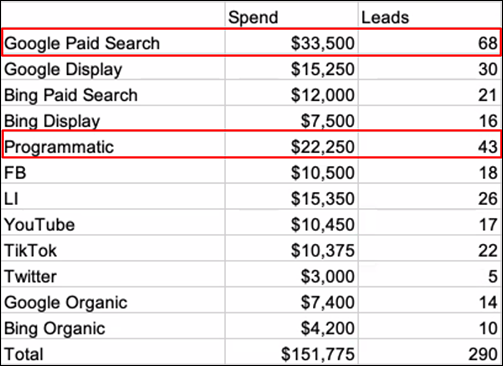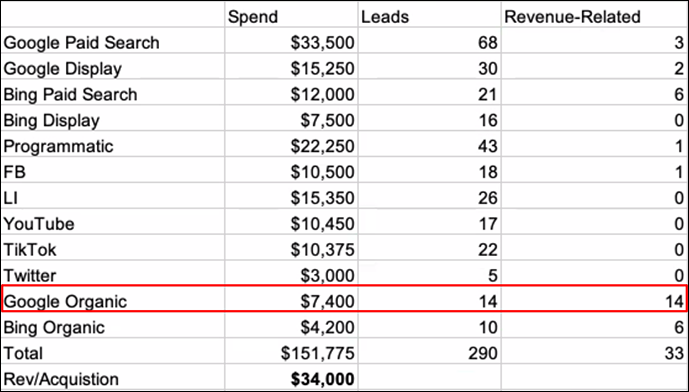Learning from Attribution Reports
Introduction
The last decade has seen significant adoption of Multi-Touch Attribution (MTA) among marketers. However, many practitioners possess only a surface-level understanding of its greatest value. While MTA is popularly known for calculating conversion credit for different marketing touchpoints and understanding the customer journey, its real worth lies in the actionable insights it generates to drive revenue and improve efficiencies.
Indeed, MTA provides valuable information on the fractional credit each touchpoint has to the eventual sale and offers granular views of the customer journey. But the outputs can be transformative when used to reallocate spends, reposition creatives, optimize paths for speedy conversions, and even double down on the most effective paths to increase revenue and reduce waste.
MTA's value stems from the mandatory closed loop between all marketing elements and sales revenue. Without revenue attribution, MTA can only provide insights that are 1-2 steps away from bottom line impact. However, with revenue attribution, MTA's ability to query specific quantifiable metrics through comparisons, filters, and sorts leads to revenue multipliers and efficiency factors. For growth-focused brands, understanding the customer journey is only valuable to the extent that the information is actionable: improving the customer experience to drive business results.
Attribution Insights
For most MTA solutions, attribution output spans formats from custom reports and spreadsheets to CRM records and configurable dashboards. In each case, the choices of sorts, filters, and queries allows marketers to divine marketing element performance from channel to creative, measuring across all brand KPIs, enabling dimensions, and metrics.

Channels and Touchpoints
Attribution output can tell marketers which channel functions best at top of the funnel, first exposing prospects to the brand’s offering, which contribute most to conversion, and which are most associated with revenue. For example:
- Which channel produces the most leads (prospects completing a contact form) during the campaign?
- Which channel produces the most-qualified leads (per scorecard, conversion rate, or revenue value)?
- Which channel most often produces the first touch of converting customers for a given quarter?
- Which channel originates the most revenue for a specific time period?
Businesses can also drill down to the impact of individual touchpoints on conversions and revenue. Brands can assess touchpoints for greatest engagement (by duration), earliest top of funnel efficacy (most common entry points for revenue-producers), or most likely to precede conversion or sale (final decision touchpoints). By analyzing the contribution of each touchpoint, such as a search ad or specific email campaign creatives, to conversions and revenue, businesses can identify the touchpoints that are most effective at engaging and converting their target audience in multiple contexts.

Customer Journeys
The clarified customer journey provides marketers with a richer understanding of customer intent through their recorded interactions, decisions, and purchasing habits. Marketers see which channels, elements, and path combinations engage customers through every phase of the funnel.
- Which landing pages are visited the most by revenue producing customers?
- Which pages have the longest visit duration by different customer segments?
- What are the most common paths for revenue-producing customers?
- What are the preferred channels for new customers?
- Which touchpoints are preferred for customers around each key decision point (e.g., from visitor to lead, from lead to opportunity, from opportunity to customer)
While the MTA output reveals what is most effective in reaching and influencing customers, it also reveals that which doesn’t produce value. These are drains of value and opportunity that can be optimized or eliminated.
Attribution Application
Once able to quantify specific marketing element value and customer journey preferences, marketers can apply the insights to maximize revenue and limit inefficient or low-performing resources.

Accurate attribution data identifies greatest revenue value assets and tactics, as well as least efficient ones. Arcalea's Galileo attribution platform isolates performance factors and calculates predictive returns from reallocations.
Reallocating Resources
The simplest, yet effective method of increasing return is reallocating spends and efforts to highest performing practices. Without multi-touch attribution, brands must allocate based on reported outputs from channel managers. For example, Google Ads Manager might reveal the specific numbers of B2B conversions (e.g., webinar registration), but not the eventual revenue recorded in an accounting platform or CRM. As a result, brands might increase spends for conversions–not revenue.
Reallocating Ineffective Resources
Once channels are analyzed for revenue, businesses can optimize their marketing resources and spend to achieve the highest ROI. For example, if social media advertising is driving the most revenue at the lowest cost, businesses can allocate more resources towards this channel.

Channel-specific platforms report spend and number of leads. In this case, Paid Search and Programmatic appear to lead in performance and merit more investment.

Multi-touch Attribution, however, reveals which channels and leads create revenue. In this example, full revenue attribution reveals that Paid Search and Programmatic are poorly performing expenses, while Google Organic is the source of highest quality leads and revenue.
Accurate full-path attribution ensures that revenue is appropriately allocated to channels and touchpoints. Businesses can then reallocate their budget confidently to maximize results.
Reallocating for Conversion Rates
Once all touchpoints are captured and the marketing-sales loop closed, conversion rates can be compared across the marketing mix. Different channels, media, touchpoints or creatives can be compared against specific common dimensions. Full path attribution answers key conversion questions:
- Which conversion types perform best (e.g., download, webinar, sales consultation, demo)?
- Which channels produce higher conversion rates (e.g., organic search, paid search, display, paid social media)
- Where are the highest revenue conversions found (which type and channel conversions drove the most sales)?
- How do specific pages and creatives compare (specific URL, message, or creative)?
Resources and spends for elements with low conversion rates are reallocated to better performing marketing elements depending on goal. If multiple goals conflict, reallocation might not be the best choice. For example, if one segment is reached most effectively in social media, the brand might not reallocate away from the channel even if conversion rates are not the highest. Instead, the channel should be optimized for better conversion rates.
Reallocating for Cost Per Action/Acquisition (CPA)
By analyzing which channels are driving the most qualified leads at the lowest cost, businesses can reallocate from channels and paths with high CPAs to those with lower ones.
With MTA, comparisons of CPA can be made within and across channels. For example, if organic search is driving the most qualified leads at the lowest cost (CPA), businesses can invest more in search engine optimization (SEO) to improve rankings and drive more organic traffic. As long as MTA is configured as full-path attribution (i.e., closed-loop marketing), comparisons can answer key acquisition questions.
- Which campaigns within a channel merit additional investment and which should be reduced, optimized, or eliminated?
- Which channel is most effective at creating leads at efficient cost, whether paid social, organic search, or other source?
- Which specific CPAs across and within channels perform best, whether campaigns, paths, or creatives? Because channel platform reporting will include idiosyncrasies of the platform, only full-path MTA reporting calculates the actual CPA for each touchpoint regardless of channel.
Optimizing Marketing Elements
While the first opportunity for optimization is simple reallocation from low-performer to high-performer, MTA insights support more specific optimizations to fully exploit attribution’s power. By customizing elements of marketing mix, creatives, and paths, marketers can use MTA to solve specific revenue challenges, unique targeting, and capture additional revenue.

Retargeting
For customers who have abandoned carts or stopped engaging, MTA can reveal whether retargeting through display advertising or email marketing is particularly effective at recapturing revenue. Comparing the performance of different messaging, incentives, and channel combinations, analysts can determine optimizations to test for abandoned carts and reduce churn.
Personalization
Marketing attribution can also help businesses personalize the customer experience and increase conversions and CLV. By analyzing the behavior of each customer across multiple touchpoints, businesses can tailor their marketing strategies to meet the unique needs and preferences of each customer. For example, if a customer has a history of purchasing products in a particular category, businesses can send personalized recommendations and offers for similar products to increase the likelihood of repeat purchases.
With MTA, additional custom data such as channel preferences, purchase history, and interaction choices is captured in the CRM for a full 360 view of the customer. As a result, personalization opportunities are far easier to recognize. Multiple personalization techniques can be compared, and then redeployed in different combinations during specific phases to increase immediate return and customer LTV.
Cross-channel Marketing
MTA can help businesses understand how different marketing channels work together to influence customer purchase decisions. By optimizing cross-channel marketing efforts, businesses can increase the effectiveness of their marketing campaigns and increase customer lifetime value. Without full-path attribution, cross-channel marketing metrics are limited to channel-specific metrics. With cross-channel visibility, the full path–for individuals or aggregate–is measurable across all key metrics and dimensions.
Tailoring for Segments
Attribution reports quantify the impact of specific channels and touchpoints on different customer segments, such as demographics and attributes. This information can be used to tailor marketing efforts to specific customer segments, ensuring the right efforts reach the right audiences. By comparing all new customer conversions, identify the channels most effective for driving initial awareness and consideration to apply to new campaigns. Identify commonalities among highest LTV customers to replicate any trends to other customers, such as touchpoints proven effective to enhance experience and post-purchase engagement.
The application of MTA output not only increases ROI, it opens up increasingly varied optimization possibilities. By applying multiple varied models and querying against key business metrics and dimensions, analysts create a sustained improvement cycle. As long as marketers are willing to experiment and apply learning, brands can efficiently continue to grow market share.






RESPONSES